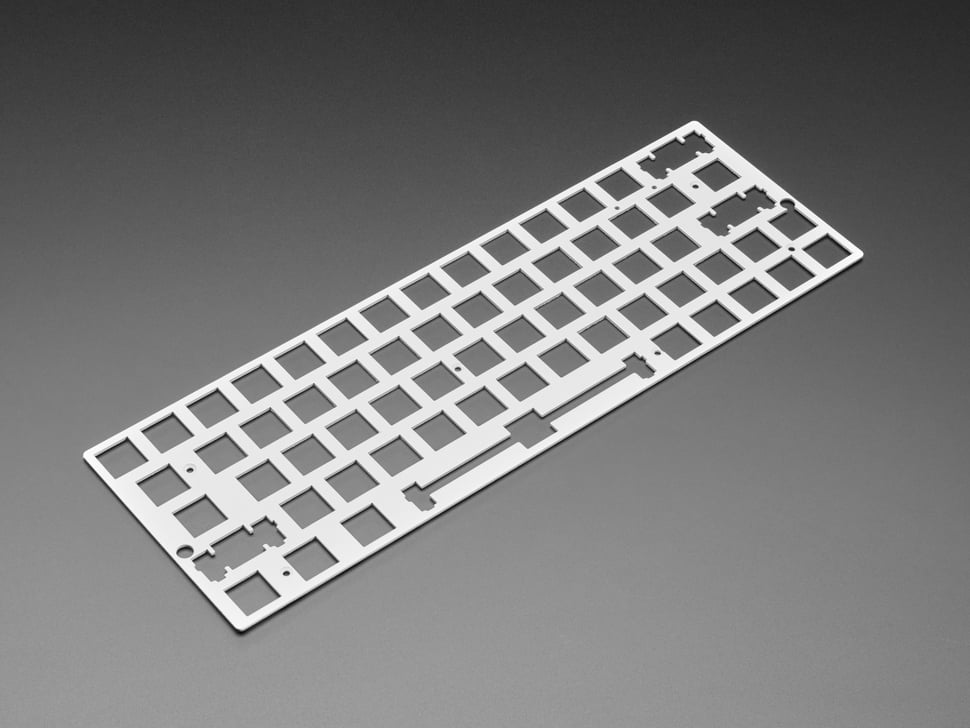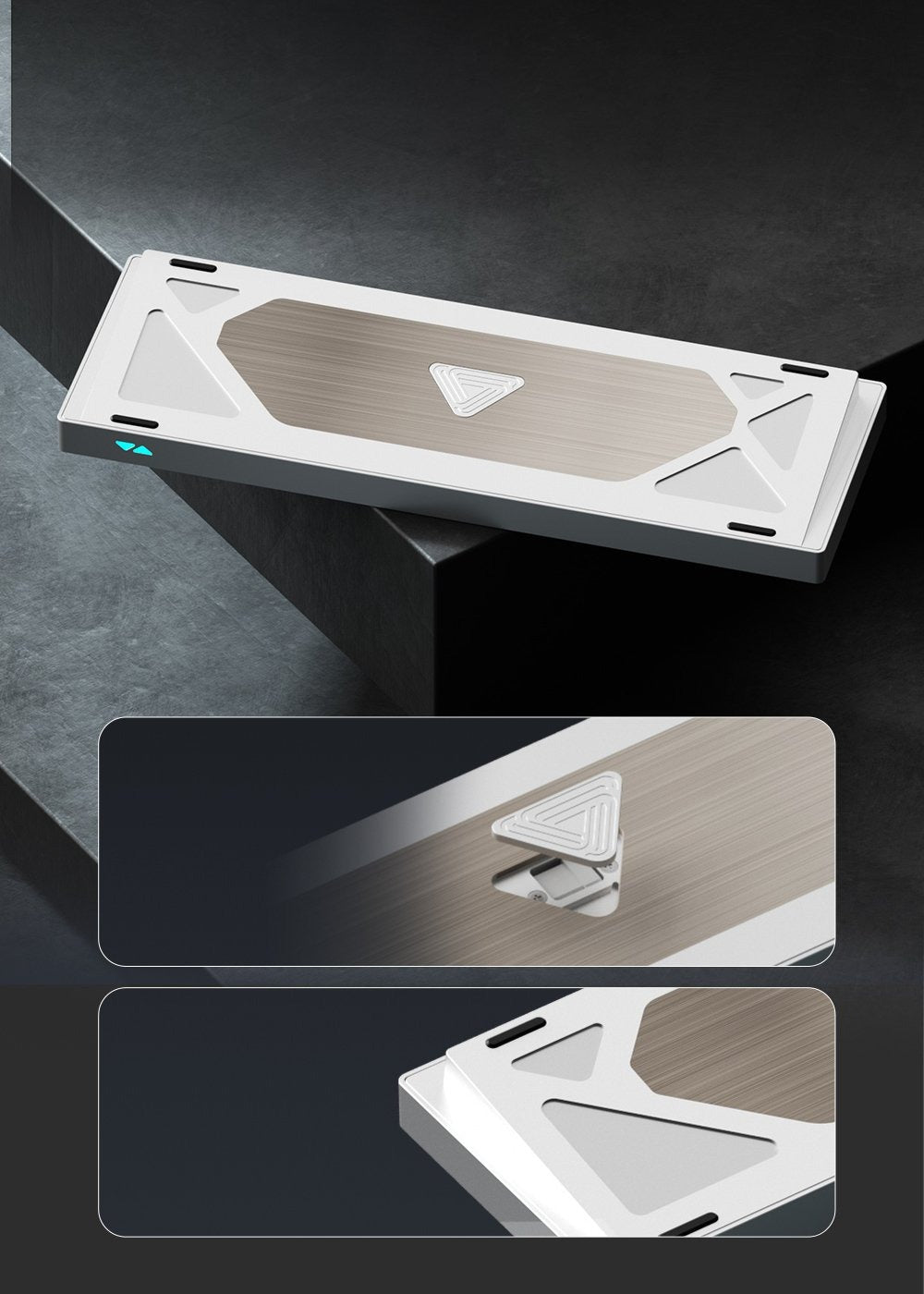When it comes to customizing a mechanical keyboard, one of the most important — yet often overlooked — components is the plate material. The keyboard plate sits between the switches and the case, providing structural stability and influencing both sound and typing feel. Choosing the right plate material can completely transform your keyboard’s acoustics, stiffness, and overall typing experience.
Different materials such as steel, aluminum, polycarbonate, FR4, and carbon fiber each offer unique characteristics. Understanding their differences helps you choose the best fit for your typing preferences — whether you prefer a stiff and sharp typing feel or a soft and flexible sound profile.
Steel Plate
Steel plates are known for their rigidity and durability. They provide a solid and firm typing experience with minimal flex, making each keystroke feel crisp and stable. Because of the material’s density, it also enhances the keyboard’s acoustic resonance, creating a louder and higher-pitched sound.
Pros: Extremely durable, stable, and great for users who prefer a stiff and responsive feel. Cons: Heavier and can produce a metallic “ping” sound if not dampened properly. Sound/Feel: Sharp, firm, and bright — often described as “clacky.”
Aluminum Plate
Aluminum plates are a favorite choice for custom mechanical keyboards because they strike a great balance between stiffness and flexibility. Aluminum provides a more controlled typing feel than steel, while maintaining a clear, balanced sound profile that works well for both linear and tactile switches.
Pros: Lightweight yet strong, consistent feel, and clean acoustic response. Cons: Slightly less durable than steel and can still sound metallic if undampened. Sound/Feel: Balanced and crisp, with a medium pitch and satisfying “thock.”
Polycarbonate Plate
Polycarbonate (PC) is a flexible plastic material known for its soft, cushion-like typing experience. It absorbs vibrations more effectively than metal plates, leading to a deeper and quieter sound signature. Polycarbonate plates pair beautifully with gasket mount keyboards for a smooth and bouncy typing feel.
Pros: Soft and flexible, excellent sound dampening, lightweight. Cons: Less rigid and can feel too soft for users who prefer firmness. Sound/Feel: Deep, muted, and flexible — often described as “marbly” or “bouncy.”
FR4 Plate
FR4 (fiberglass-reinforced epoxy laminate) is the same material used in PCBs, and it has become increasingly popular as a plate material. It offers a great balance between stiffness and softness, making it ideal for users who want a neutral, well-rounded typing feel. FR4 plates tend to produce a deep, clean, and consistent sound.
Pros: Balanced stiffness, great acoustics, and lightweight. Cons: Slightly less durable than metal plates, not as rigid for aggressive typing. Sound/Feel: Deep and satisfying with moderate flex — a “best of both worlds” option.
Carbon Fiber Plate
Carbon fiber plates are lightweight, strong, and provide a unique blend of stiffness and flexibility. They deliver a fast and snappy typing response with a distinctive muted tone. Because of their composite structure, carbon fiber plates have a “dry,” deep sound that many enthusiasts find appealing.
Pros: Very strong yet light, unique feel, premium aesthetics. Cons: More expensive and can vary in sound depending on the weave quality. Sound/Feel: Deep, dampened, and snappy with minimal vibration.
Brass Plate
Although not as common, brass plates are another premium option that provides a rich, dense typing experience. Brass offers more rigidity than aluminum but retains smoother acoustics than steel. It’s ideal for users who prefer a solid, luxurious feel with a deeper tone.
Pros: Elegant look, weighty feel, and rich sound profile. Cons: Heavier and more expensive. Sound/Feel: Deep, full, and resonant — perfect for users seeking premium acoustics.
How Plate Material Affects Acoustics and Stiffness
- Metal plates (steel, aluminum, brass) – Stiffer, louder, and more resonant. Great for precise feedback and gaming.
- Plastic plates (polycarbonate) – Softer, quieter, and more flexible. Ideal for a comfortable typing experience and muted acoustics.
- Composite plates (FR4, carbon fiber) – Balanced stiffness and rich acoustics, offering the best of both flexibility and stability.
Which Plate Material Should You Choose?
There’s no one-size-fits-all answer — the best keyboard plate material depends on your typing preference and desired sound profile. If you prefer a firm and precise feel, go with steel or aluminum. If you love a soft and quiet typing experience, polycarbonate is an excellent choice. For a balanced experience that combines both flexibility and crisp sound, FR4 or carbon fiber are highly recommended.
Conclusion
Choosing the right plate material for your mechanical keyboard is crucial for achieving the typing sound and feel you want. Every material — from steel to carbon fiber — offers distinct characteristics that shape the keyboard’s acoustics, stiffness, and feedback. Whether you prefer a loud, firm, and clicky experience or a soft, deep, and flexible one, your plate material is the foundation of that experience.






